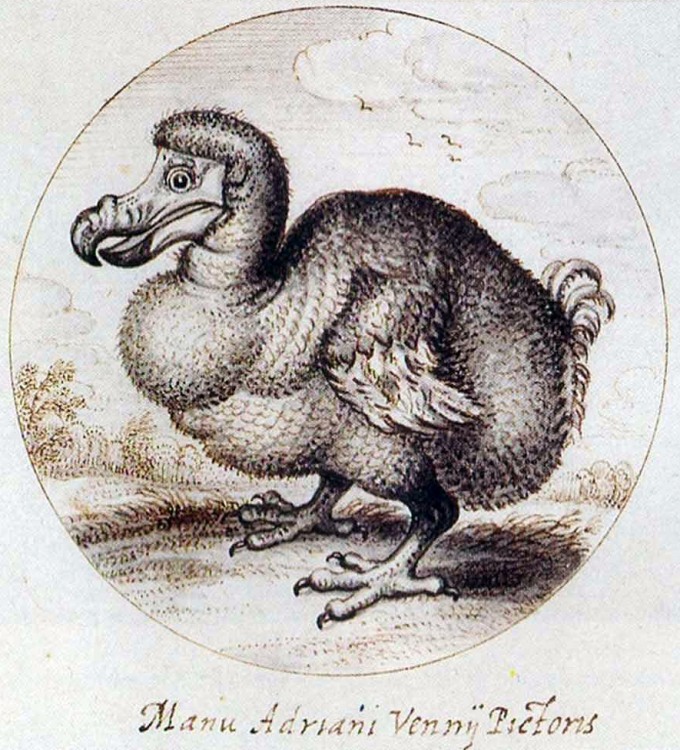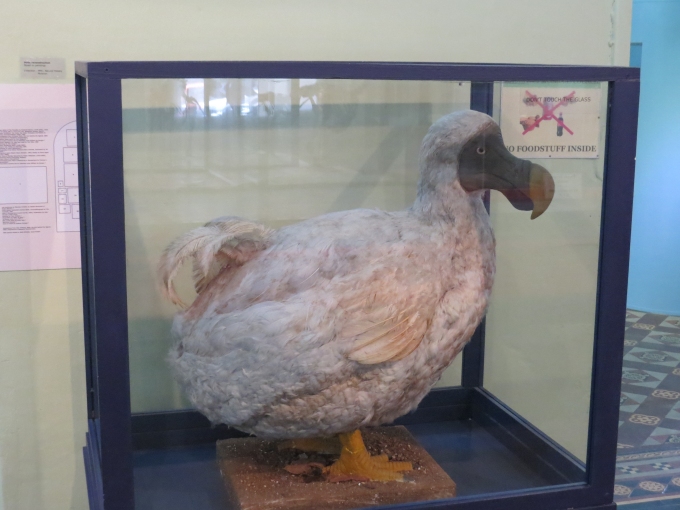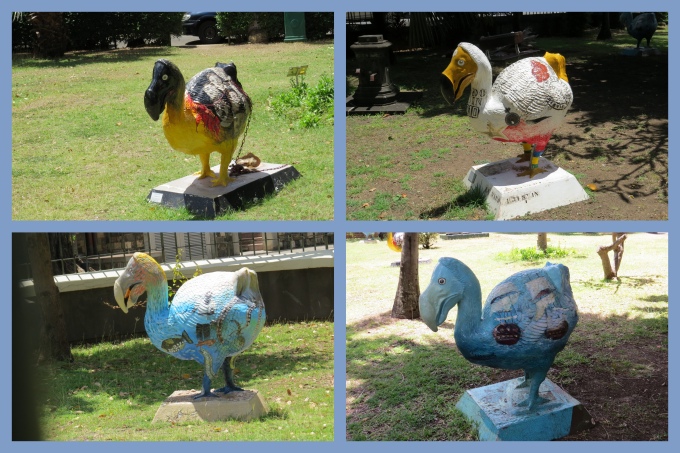Our first day in any port is usually spent getting our bearings and walking around. Port Louis, the capital city of Mauritius, is vibrant, high energy and offers lots to see and do. There's eye candy everywhere you turn. After small, laid-back places like the Cocos and Rodrigues, mooring in the heart of the city is a fun, pleasant change. They say the best view of the city is from the sea and we'd have to admit, it was a lovely first view.

We set out on foot mid-morning, walking down the Caudan Waterfront, a huge, modern esplanade lined with upscale eateries and boutiques. A rainbow of parasols hung above the walkway, providing both shade from the sun and a riot of color to pedestrians.

The days have been warm and sunny and walking was a pleasure after being captive aboard Cups for a few days. The pace in the city is frenetic. Heavy, fast-moving cars, motorbikes, trucks and bicycles whiz along streets crowded with pedestrian traffic that overflows the narrow sidewalks. Wherever there is a bit of space, a vendor has spread his wares or offers street food or hawks his services.

We walked through the Central Market … it's absolutely huge. Fresh veggies and fruits galore, spices and teas, are all artfully displayed inside the market building, originally built in 1844. Upstairs on a mezzanine level, there are “crafts” vendors (souvenirs) and outside the perimeter of the market building, there are vendors set up under tents and tarps with narrow paths between them selling everything from hubcaps to clothing to pots and pans to batteries. It's crazy and frenzied. Everyone is shouting their prices and promotions. People are darting in and out and around. A good place for a pickpocket and we were very mindful of our valuables. Saturday is the “big” market and we can't imagine how it could be bigger or more crowded, but we're game to find out.

We stopped in the Natural History Museum. The entry is free and though small, it does provide a pretty good overview of the flora and fauna of the island with an emphasis on extinct animals, especially the dodo bird.

We wandered through the Company Gardens, a park originally established by the French East India Company for growing produce for the colony. Huge ficus trees shade the area. There are fountains and lots of benches and statues spread around for visitors to enjoy. We caught a fine view of Le Pouce, the thumb-shaped mountain that sits high above the city and a beautiful flamboyant tree blooming in the foreground and a shadowed statue of Leoville L'Homme, a premiere 19th century Mauritian poet .

There's an old wind mill that sits on a hill above the port that was originally used to mill flour for the dockworkers. Built in 1736, it has survived all the more modern construction around it (unlike the dodo bird) and now houses a small museum which, we were told, never seems to be open during its posted hours.

Just across the street, we noticed the main post office which had a postal museum attached. We were here, we thought, why not? I love it when we discover some new pieces of trivia. The first postal services in Mauritius date back to 1772 when the island was a major sugar-producer for Great Britain. Mauritius was the first British colony in the world to issue a stamp, thus establishing a prepaid postal delivery service. The famous Penny Black is on display, the world's first adhesive stamp.

China Town was easy to find. We spotted the paifang, the traditional Chinese gateway, and headed that way. Business was brisk in the myriad of little shops that lined the narrow streets. We noted the Chinese signs and tiny grocery stores offering unidentifiable foods. Street vendors sold everything from artificial flowers to lychees to flip-flops. We made a note to return for lunch at one of the tiny 4-table restaurants before we leave.

We spotted a beautifully ornate green and white building and tried to figure out what it was. After further investigation, we determined it was a mosque. We weren't sure if it was permissible for us to go inside, but a man on his way in beckoned us to follow him. “Is it okay for us to go inside?”, we queried. “Yes, yes … come.” We'd never been inside a mosque before. It was beautiful and peaceful. We watched silently as men entered, put down their prayer rugs and began to worship. The Jummah-Masjid mosque dates from the 1850s and covers nearly a block. We are reminded of our visit now, each time we hear the muezzin's call to prayer, especially in the quiet of the morning just before dawn.

We walked for hours checking out nooks and crannies of the city and planning our upcoming days for other places to visit on the island. Today was only a tiny taste of what Mauritius holds in store for us and we can't wait to see more.
















